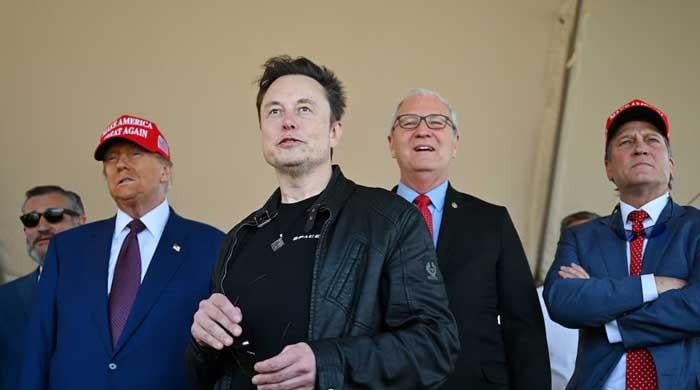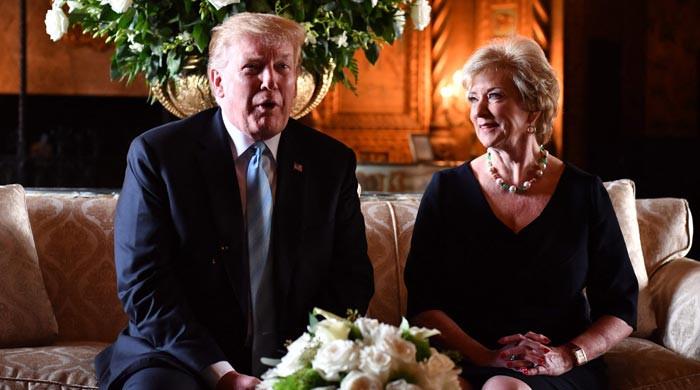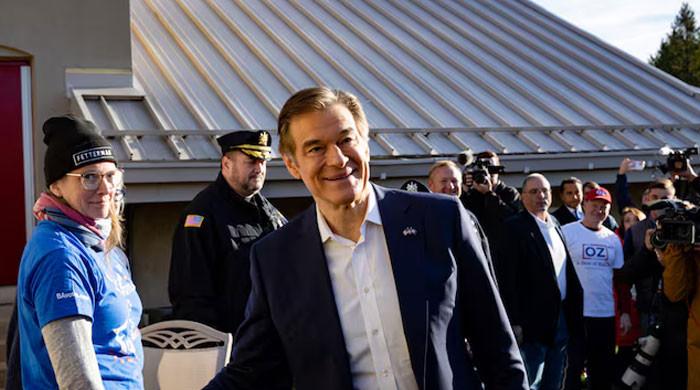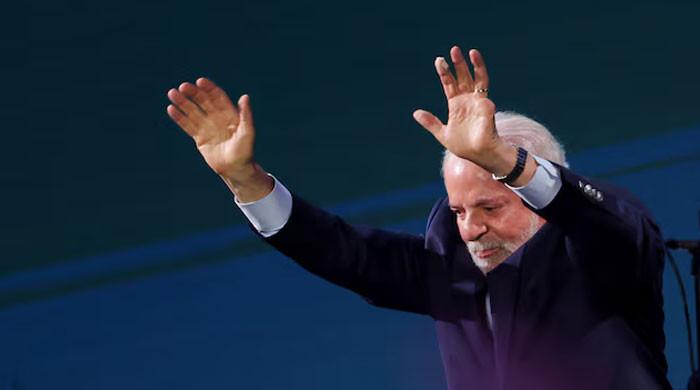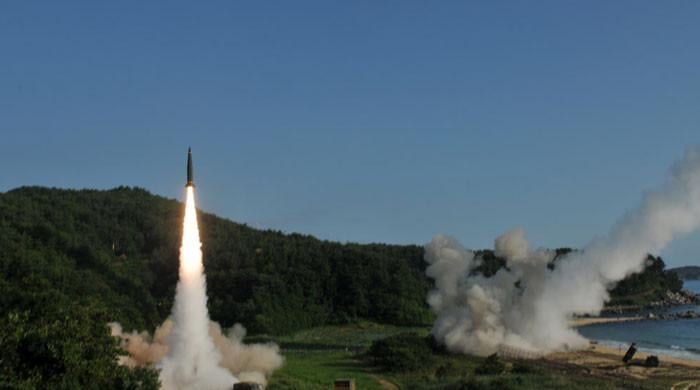Sri Lanka president to step down, parliamentary speaker says, amid storm of protests
Announcement comes after day of violent protests in which demonstrators stormed president's official residence and set fire to PM's home in Colombo
July 09, 2022
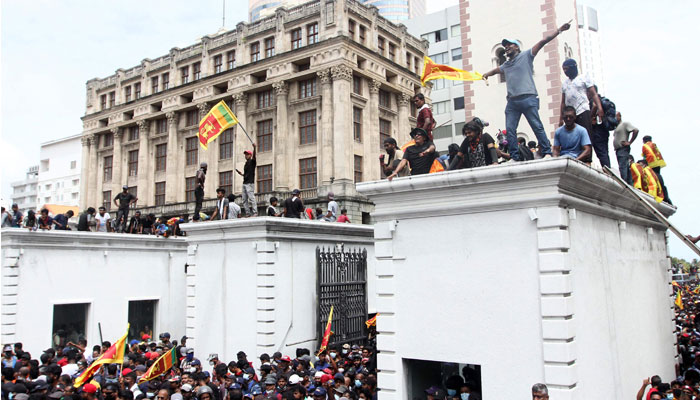
- Speaker says president to step down on July 13
- Thousands of protesters storm president's house, office
- Prime minister's private home set on fire
- PM says he is willing to step aside
- Protesters demand president's resignation over crisis
COLOMBO: Sri Lanka's President Gotabaya Rajapaksa will step down next Wednesday, the country's parliamentary speaker said on Saturday, bowing to popular pressure after a day of violent protests in which demonstrators stormed the president's official residence and set fire to the prime minister's home in Colombo.
The announcement came after a dramatic escalation in months of largely peaceful anti-government protests over a dire economic crisis on the Indian Ocean island of 22 million people.
There was no immediate word from the president himself.
Speaker Mahinda Yapa Abeywardena said in a video statement Rajapaksa had informed him that he will step down from his post.
"The decision to step down on 13 July was taken to ensure a peaceful handover of power," Abeywardena said. "I therefore request the public to respect the law and maintain peace," he said.
The news of president's decision triggered an eruption of celebratory fireworks in parts of Colombo.
Prime Minister Ranil Wickremesinghe also said he is willing to resign to make way for an all-party government, his office said in a statement on Saturday evening.
It was not yet clear if this would quell popular anger.
Throughout the day soldiers and police were unable to hold back a crowd of chanting protesters demanding Rajapaksa's resignation and blaming him for the country's worst economic crisis in seven decades.
Neither Rajapaksa nor Wickremesinghe were in their residences when the buildings were attacked.
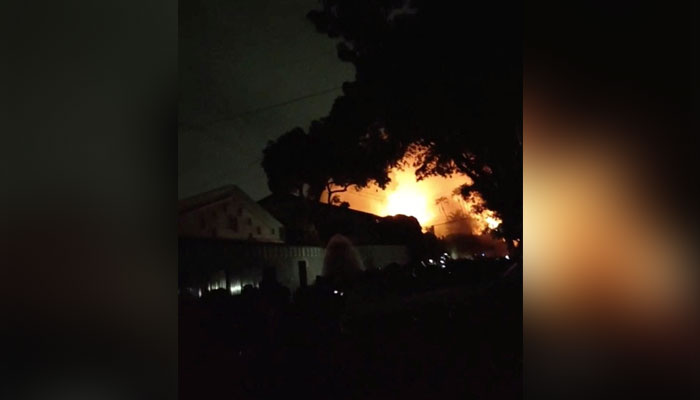
Inside the president's house during Saturday's protests, a Facebook livestream showed hundreds of protesters, some draped in the national flag, packing into rooms and corridors.
Video footage showed some of them splashing in the swimming pool, while others sat on a four-poster bed and sofas. Some could be seen emptying out a chest of drawers in images that were widely circulated on social media.
Hundreds milled about in the grounds of the colonial-era whitewashed residence, with few security personnel in sight.
Rajapaksa had left the official residence on Friday as a safety precaution ahead of the planned weekend demonstration, two defence ministry sources said.
Reuters could not immediately confirm his whereabouts
Later on Saturday, video footage on local news channels showed a huge fire and smoke coming from Wickremesinghe's private home in an affluent Colombo neighbourhood. His office said that protesters had started the fire.
There were no immediate reports of injuries in the blaze. Wickremesinghe had moved to a secure location, a government source told Reuters early in the day.
At least 39 people, including two police officers, were injured and hospitalised during the protests, hospital sources told Reuters.
The country is struggling under a severe foreign exchange shortage that has limited essential imports of fuel, food and medicine, plunging it into the worst economic crisis since independence in 1948.
Soaring inflation, which reached a record 54.6% in June and is expected to hit 70% in the coming months, has heaped hardship on the population.
Party talks
The decision by the president and prime minister to step aside came after Wickremesinghe held talks with several political party leaders to decide what steps to take following the unrest.
"Wickremesinghe has told the party leaders that he is willing to resign as Prime Minister and make way for an all-party government to take over," his office said in a statement.
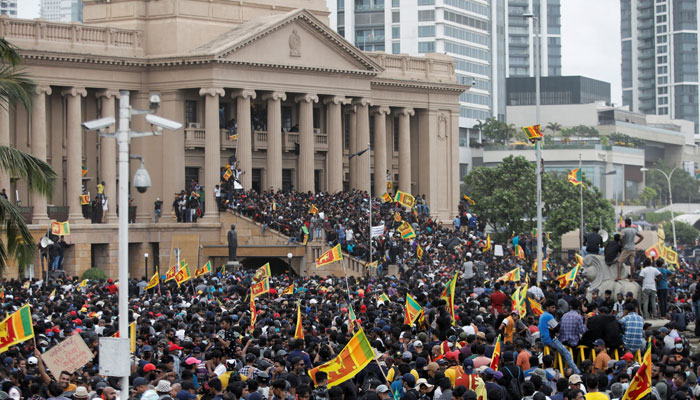
The parliamentary speaker, Abeywardena, said in a letter to Rajapaksa that several decisions had been made at the meeting of party leaders — including the president and the prime minister resigning as soon as possible and parliament being called within seven days to select an acting president.
"Under the acting president the present parliament can appoint a new prime minister and an interim government," said the letter released by the Speaker's office.
"Afterwards under a set time an election can be held for the people to elect a new parliament," it added.
Leaders of several opposition parties also called for Rajapaksa to resign.
"The president and the prime minister must resign immediately. If that does not happen political instability will worsen," said Sri Lanka Freedom Party leader and former president Maithripala Sirisena, speaking before Wickremesinghe had offered his resignation and before the news the president planned to step down.
"This is a dicey situation. If a clear transition is not put in place the president and prime minister's resignation will create a power vacuum that could be dangerous. The Speaker can appoint a new all-party government but whether they will be accepted by the protesters remains to be seen," said political analyst Kusal Perera.
Economic crisis
Political instability could undermine Sri Lanka's talks with the International Monetary Fund as it seeks a $3 billion bailout, the restructuring of some foreign debt and fund-raising from multilateral and bilateral sources to ease the dollar drought.
The economic crisis developed after the COVID-19 pandemic hammered the tourism-reliant economy and slashed remittances from overseas workers.
It has been compounded by the build-up of hefty government debt, rising oil prices and a ban on the import of chemical fertilisers last year that devastated agriculture. The fertiliser ban was reversed in November.
However, many blame the country's decline on economic mismanagement by Rajapaksa and there have been months of largely peaceful protests demanding his resignation.
Before breaking into the government buildings on Saturday, the protesters dismantled several police barricades in Colombo's government district.
Police fired shots in the air but were unable to stop the crowd from surrounding the presidential residence, a witness said.
Discontent has increased in recent weeks as the cash-strapped country stopped receiving fuel shipments, forcing school closures and rationing of petrol and diesel for essential services.




